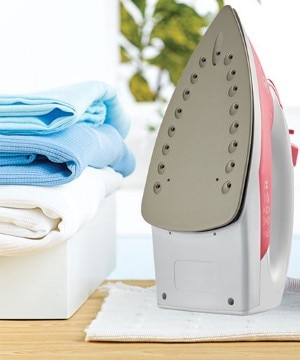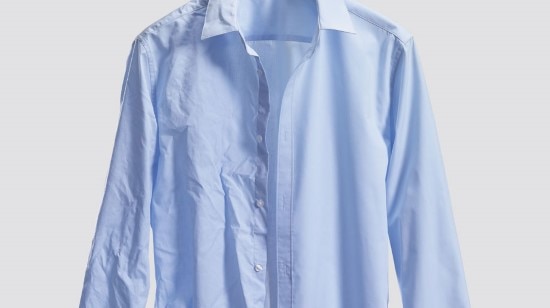Irons Buying Guide

Have you ever left the house and had to go back to make sure you didn’t forget to unplug the iron? Do you have pets or small children who might bump into the ironing board and knock the iron over? Have you ever been interrupted by the telephone when ironing? If you’re like most people, you probably don’t think about safety when buying an iron, but when you are using it, safety is not something you can ignore. If you pick the right iron, ironing may never be your favourite task, but is sure doesn’t have to be a stressful one.
Prevention
Preventing ironing accidents can be a simple matter of the shape of the iron. When you are at the store, stand up a few irons and see which ones are the hardest to tip over. A large, rubberized back, for example, can make a big difference. An iron that blinks, beeps and then shuts itself off if it gets tipped over or stands upright without being used, as in the 4safety™ series of irons from Electrolux – the only steam irons ever with four safety functions.

Ergonomic ironing
When you are using a tool to do a job, how it feels in your hand and how much effort it takes to manipulate it can be the difference between smiling and grinding your teeth. When it comes to steam irons, having the right design for the grip, the angle for the handle, the correct overall weight and a smoothly gliding surface are all things that will make you feel that your iron is working with you, not against you.
Light-weight irons are easy to maneuver quickly and are often stylishly designed with dynamic, angled handles. They are great for people who find heavier irons hard to handle. People with more hand strength can sometimes find a heavier iron is easier to use effectively, though, since it will do some of the work. If the iron is heavy, the handle should be parallel to the work surface to improve leverage and make it easier to maneuver.
Who wouldn’t prefer their iron to glide smoothly across their fabrics? Look for a special sole plate surface that reduces friction. Also look for flattened rims so you can easily iron around buttons and into pockets. Having rims that are the right shape also prevents the edge catching on the fabric accidentally and ironing in creases.
Shouldn’t you be able to iron where you want to instead of where your electrical outlets force you to? If you have an iron with a nice long cord, you can set up the ironing board where you want to and watch your favourite show on the TV – or look out the window and keep an eye on your neighbours.

Ironing effectively
The best kind of iron for you also depends on what you are usually ironing. Does that mountain of cotton shirts fill you with dread every week? If so, you can do yourself a big favour by choosing an iron that puts out a lot of steam. That’s because the water molecules in the steam lubricate and stretch the fibers of the fabric and allow them to be more easily slid back into place, removing the wrinkles.
High-performance irons can continuously put out about 40 grams of steam per minute which you can usually boost briefly to 130 grams per minute or more. They also have a power output of 2400 watts and more, so you don’t have to stand around waiting for them to heat up. And what about suits and dresses? If that’s what you wear to work, you’ll probably want an iron that can be used vertically to steam out the wrinkles of a long day from them while they hang.

Ironing with care
Ever worry about scorching your delicate fabrics? An iron has to be hot enough to do the job, but the last thing you want is to damage your clothes. The best way to make sure your iron is at the right temperature is to always start with the silk and synthetic clothes that need to be ironed at the lowest temperature and work your way up to the cottons and linens. But what happens when you’ve been ironing shirts (at 175 degrees C) but suddenly realize you forgot about that silk blouse that needs touching up (at 115 degrees C)? How do you know when the iron is back down to a safe temperature? If you have a variety of things to iron or a lot of delicate synthetic or silk garments you can feel much more secure that your iron is at the right temperature if it has a digital temperature read-out.
Of course, now that you’ve almost found your perfect iron, you wouldn’t want to damage it, so look for models that have scratch-resistant sole plates that won’t get ruined by running over zippers.
*Disclaimer: Pictures are for illustration purpose only and not necessarily the products that are sold.